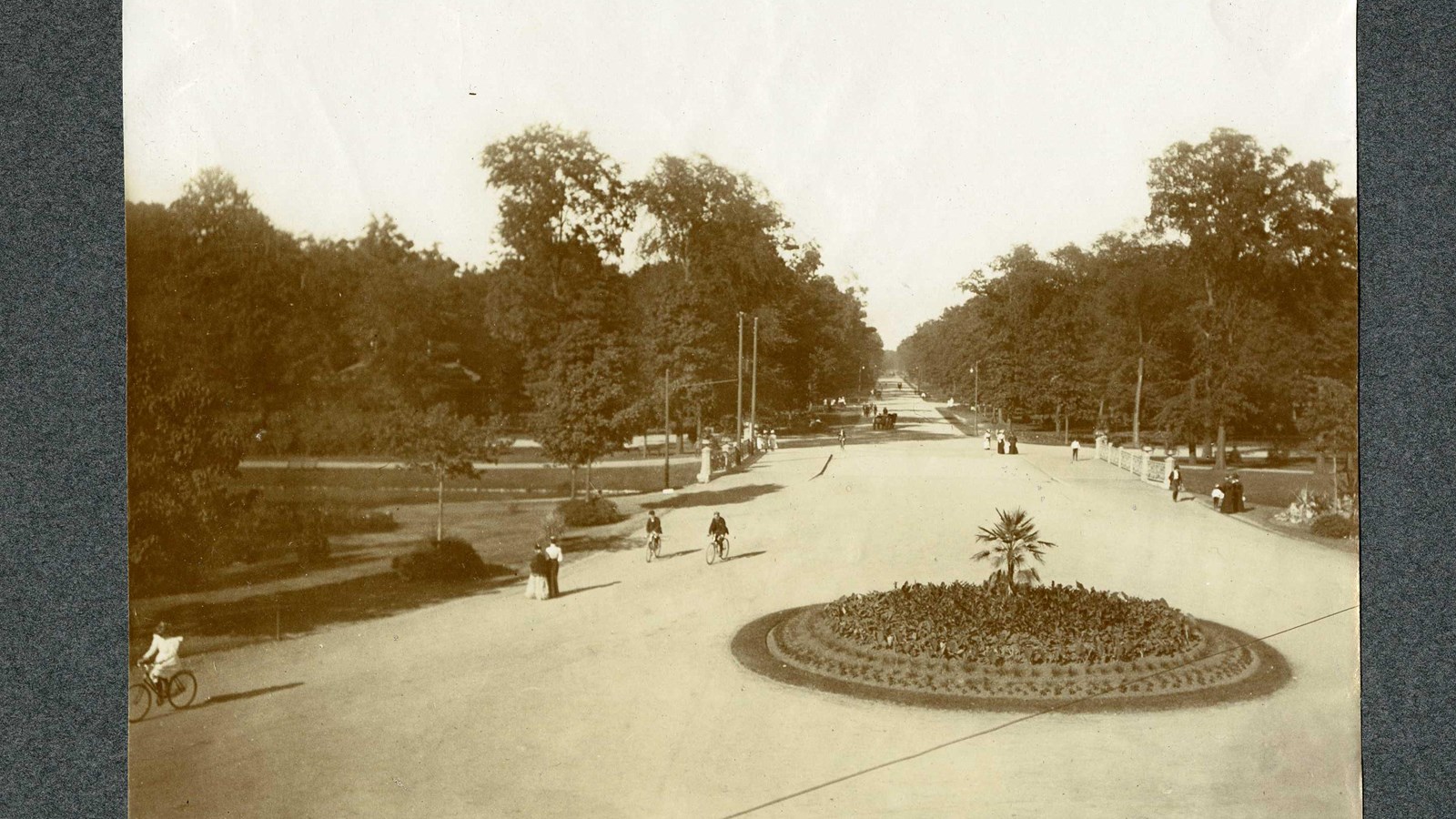Last updated: May 24, 2024
Place
Belle Isle Park

Olmsted Archives, Job #00661, Detroit, MI
Quick Facts
In 1881, Frederick Law Olmsted Sr. was commissioned by the city of Detroit to transform a small island in the Detroit River into a park. Initially, Olmsted wasn’t too happy with the site selected, stating “conditions could not be more favorable to the breeding and nursing of mosquitoes…[In] the pools…I found discolored, and covered by bubbles and a green scum; and there was a putrescent organic matter on their borders…”
Olmsted was contracted by the Detroit for three years, being paid $7,000 for his design. The challenge at Belle Isle was creating a design that would allow for public gathering and recreation while maintaining the natural state of the island. The solution was to place a ferry dock at one end, concentrating all the public facilities at the end. This allowed Olmsted to leave the rest of the island in as natural a state as possible.
To remedy the marshy land forming on the low-lying island, Olmsted proposed a system of underground pipes that would lead into canals, which had a dual purpose of being used for pleasure boating. From the start, Olmsted put more investment into Belle Isle than many Detroiters, even waving his normal visitation fees. He hoped to capitalize on the island’s existing wooded area to serve as the park’s central attraction.
Unfortunately, Olmsted’s design was deemed too elaborate and, due to disagreements on funds with Detroit’s Park Board, Olmsted resigned from the project and Belle Isle was never carried out to its full extent. Elements of Olmsted’s plan were carried out, like wooded areas and the ferry landing.
All of Olmsted’s park designs include three zones- a formal zone, and active zone, and a natural zone, present in Belle Isle Park. The formal zone includes Scott Fountain and Sunset Point, the active zone encompasses cultural attractions and athletic fields, while the natural zone is dominated by the wetland forest.
Source: "Belle Isle Park," The Cultural Landscape Foundation
For more information and primary resources, please visit:
Olmsted Research Guide Online
Olmsted Archives on Flickr
Olmsted Network
Olmsted was contracted by the Detroit for three years, being paid $7,000 for his design. The challenge at Belle Isle was creating a design that would allow for public gathering and recreation while maintaining the natural state of the island. The solution was to place a ferry dock at one end, concentrating all the public facilities at the end. This allowed Olmsted to leave the rest of the island in as natural a state as possible.
To remedy the marshy land forming on the low-lying island, Olmsted proposed a system of underground pipes that would lead into canals, which had a dual purpose of being used for pleasure boating. From the start, Olmsted put more investment into Belle Isle than many Detroiters, even waving his normal visitation fees. He hoped to capitalize on the island’s existing wooded area to serve as the park’s central attraction.
Unfortunately, Olmsted’s design was deemed too elaborate and, due to disagreements on funds with Detroit’s Park Board, Olmsted resigned from the project and Belle Isle was never carried out to its full extent. Elements of Olmsted’s plan were carried out, like wooded areas and the ferry landing.
All of Olmsted’s park designs include three zones- a formal zone, and active zone, and a natural zone, present in Belle Isle Park. The formal zone includes Scott Fountain and Sunset Point, the active zone encompasses cultural attractions and athletic fields, while the natural zone is dominated by the wetland forest.
Source: "Belle Isle Park," The Cultural Landscape Foundation
For more information and primary resources, please visit:
Olmsted Research Guide Online
Olmsted Archives on Flickr
Olmsted Network
